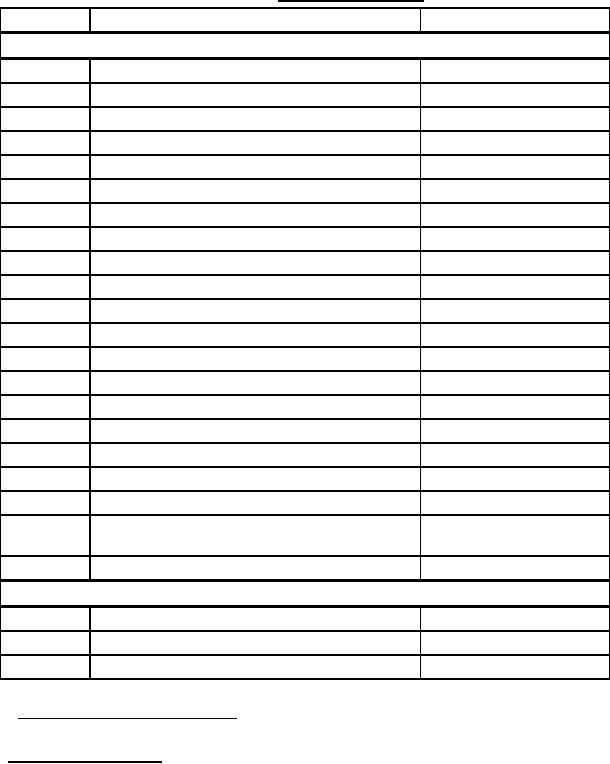
MIL-DTL-917F(SH)
TABLE XXV. Classification of defects.
Categories
Defects
Requirements paragraph
Critical
001
Design
002
Conformance with safety requirements
003
Dynamic balancing
004
Electrical creepage and clearance distances
005
Piping systems
006
Screw threads for fastening devices
007
Parts, materials, and finishes
008
Electrical insulation
009
Dielectric barrier
010
Coils and windings
011
Treating methods
012
Treating materials
013
Varnish treatment
014
Final condition
015
Wire, wiring methods, wire marking, and bus bars
3.12
016
Parts
017
Processes
018
Thermal design
019
Mechanical features
020
Requirements for operating voltages greater than
1,000 V, but less than or equal to 15,000 V
021
IA not as required.
Major
101
Utilization of standard tools
102
Plates for identification and marking information
103
Identification of parts
4.4.1 Dielectric withstanding voltage tests. Dielectric withstanding voltage tests shall be conducted in
accordance with Method 301 of MIL-STD-202 as specified (see 6.2). Test conditions shall be as follows:
a.
Magnitude of test voltage.
(1) For circuits rated 60 V or less, the rms test voltage shall be 900 V.
(2) For circuits rated more than 60 V, the rms test voltage shall be twice rated circuit voltage plus 1,000 V.
(3) For circuits containing parts that are applied within their specified ratings and are in accordance with
part specifications that specify in (1) or (2) herein, the dielectric test voltage for the circuit shall correspond to that
specified for the approved part having the lowest specified dielectric test voltage, but in no case less than:
(a) 900 V for circuits connected to the power supply terminals.
(b) 500 V for circuits electrically isolated from the power supply terminals.
71
For Parts Inquires submit RFQ to Parts Hangar, Inc.
© Copyright 2015 Integrated Publishing, Inc.
A Service Disabled Veteran Owned Small Business